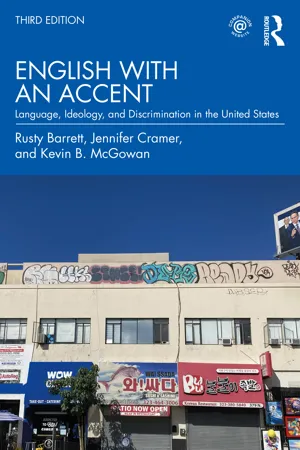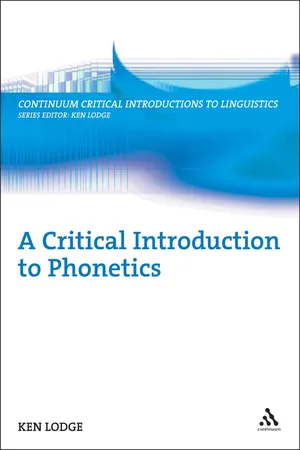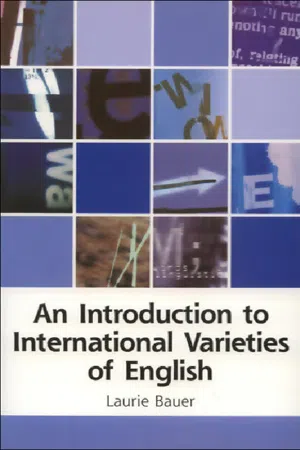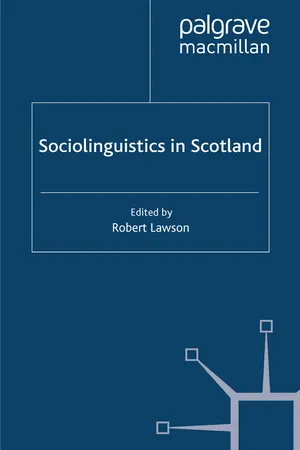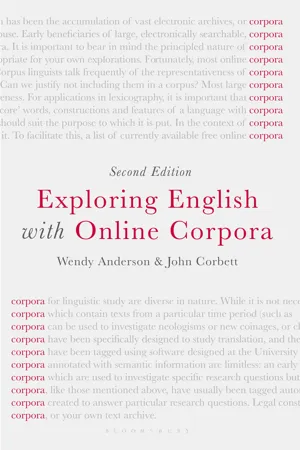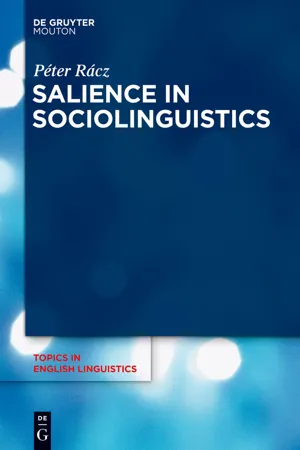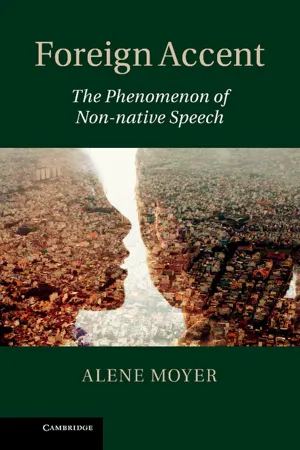Languages & Linguistics
Rhotic Accent
A rhotic accent is a type of accent in which the "r" sound is pronounced in all positions within a word. This is in contrast to non-rhotic accents, where the "r" sound is not pronounced in certain positions, particularly at the end of a syllable. Rhotic accents are found in many varieties of English, including American English and some regional dialects of British English.
Written by Perlego with AI-assistance
Related key terms
1 of 5
10 Key excerpts on "Rhotic Accent"
- eBook - ePub
English with an Accent
Language, Ideology, and Discrimination in the United States
- Rusty Barrett, Jennifer Cramer, Kevin B. McGowan(Authors)
- 2022(Publication Date)
- Routledge(Publisher)
Rhotic sounds fancy, but it is just an adjective meaning R-like. As a noun, it denotes a broad family of sounds that often have very little in common in the way they are pronounced or the physical sounds themselves. The rhotic sounds are grouped together as rhotics simply because they sound to listeners like they should be written down with the letter ‘r’. There are exquisitely detailed descriptions of each of the apparently unrelated sounds that fall into this category, but a general definition isn’t currently possible for the category itself. This is a uniquely difficult category of sounds for linguists to work with because most families of sounds will have some distinctive articulatory or acoustic feature that binds them together in the minds of speakers. Nasal sounds, like the [n], [m], and [ŋ] at the ends of the words sun, sum, and sung share a very clear set of features both as speech gestures and as sounds. The family of sounds called rhotics has no such common feature (Ladefoged & Maddieson 1996). There have been some efforts to improve upon this situation (see, for example, Lindau 1985), but for experts and non-experts alike, the word rhotic just means the sounds that, when written down, are usually written with the letter ‘r’. In most American English dialects today, the letter ‘r’ is used to represent a sound that phoneticians describe as an approximant. Approximants are the most vowel-like of the consonants in both the way they are produced in the mouth and in the way they vary from region to region - eBook - PDF
- Ken Lodge(Author)
- 2009(Publication Date)
- Continuum(Publisher)
8.2 Rhoticity The other example is rhoticity, that is, the occurrence of coda /r/, which we discussed in Chapter Four in relation to differences between SBE and GA. (Note that I use slant lines and an ordinary r-symbol to indicate a phonological entity which has a variety of phonetic realizations.) Within the British Isles rhoticity occurs, though it is on the decrease in some areas. For instance, in the South-East of England, in the 1970s, when I was recording speakers for my book on accent variation (Lodge [1984]), only speakers over about forty years of age still used rhoticity. Today it is very difficult to find a local rhotic speaker in Sussex, for example. On the other hand, there are areas, even in England, where it is still quite widespread, for example, the West Country (including urban Bristol) and parts of urban Lancashire (e.g., Bury). In addition, it is the norm in Scotland and in both Northern Ireland and the Republic. The com-monest articulations for /r/ in Rhotic Accents are an alveolar approximant [j] or a retroflex approximant [^]. Retroflex articulation affects more than just the approximant in the coda. All coda consonants involved in what we might call an r-coda, that is, one containing an /r/, are retroflex, and in many cases the articulation of the preceding nuclear vowel is affected, too. This is not surpris-ing since the tip of the tongue is either curled back or retracted for the retro-flexion, so this tongue posture is retained for the whole of the rhyme. Even in speakers who omit the approximant posture, the retroflexion remains, so we find realizations such as those in (8.2). (8.2) [kcudJ IMJ card [bs.jrje] [bsr]e] Burnley (a town in Lancashire) Some speakers in the rhotic areas of Lancashire do not have a coda approxi-mant, that is, are non-rhotic, but the preceding vocoid articulation is short before another consonant. - Laurie Bauer(Author)
- 2016(Publication Date)
- EUP(Publisher)
RP has a more palatalised version of / l / before a vowel, while most other standard international varieties have a rather darker version of / l / in this position (even if they make a distinction similar to the one in RP between the two / l /s in words like lull or little ). 6.7.2 Phonotactic distribution Phonotactic distribution refers to the ways in which sounds can cooccur in words. The major phonotactic division of English accents is made between rhotic (or ‘r-ful’) and non-rhotic (or ‘r-less’) accents (see section 1.4). The difference hinges on the pronunciation or non-pronunciation of an / r / sound when there is an orthographic < r > but no following vowel. Rhotic Accents use an / r / sound in far down the lane as well as in far away in the distance ; non-Rhotic Accents have no consonant / r / in the former (although the vowel sound in far reflects the < ar > spelling). GA, Canadian, Scottish and Irish varieties of English are rhotic, as is the English in a small area in the south of New Zealand; RP, Australian, New Zealand and South African Englishes are non-rhotic, as is the English in parts of the Atlantic States in the United States (stereotypically, the accent of Boston Brahmins, who are reputed to say ‘pahk the cah in Hahvahd Yahd’ for park the car in Harvard Yard ). The words heart and hot differ only in the vowel quality in RP, but only in the presence versus absence of an / r / in GA (and in both features in Scottish English). This difference of rhoticity has some unexpected by-products in that, for example, • only non-Rhotic Accents have an / r / in the middle of drawing (/ drɔrŋ /); • speakers of non-Rhotic Accents trying to imitate an American accent are likely to put an / r / on the end of a word like data , which has no / r / for Americans; 78 INTERNATIONAL VARIETIES OF ENGLISH- eBook - ePub
- R. Lawson(Author)
- 2014(Publication Date)
- Palgrave Macmillan(Publisher)
Although Scottish English is usually characterised as a rhotic variety of English, in recent decades sociolinguistic research has identified a weakening of rhoticity among certain socio-economic groups in lowland Central Scotland. Social-indexical patterns of rhoticity in this most populous geographical area of Scotland are reminiscent of those found by Labov in his 1960s New York study (Labov 1966) in that postvocalic /r/ seems to be one of the most consistent markers of socio-economic status. In Labov’s New York study, variants which were not easily identified as either /r/ or Ø were not included in the final analysis, but in Central Scotland, a more gradient picture of rhoticity is emerging. Speakers are still, on the whole, rhotic; it is the degree of strength of rhoticity, rather than presence or absence of postvocalic /r/ that is indicative of a particular socio-economic status. This social stratification of rhoticity in Scottish English seems to be the result of a slow-moving, local sound change, rather than resulting from contact with speakers of non-rhotic varieties of English (see Romaine 1978; Speitel and Johnston 1983).The fact that phonetically and phonologically indeterminate rhotic variants have social significance increases the difficulty of auditory and acoustic-based analyses of the social stratification of Scottish rhoticity (Stuart-Smith 2007). Nevertheless, we cannot ignore variants which are not easily classified as /r/ or Ø. As we show in this chapter, looking at these variants from an articulatory perspective can help interpret and define them, phonetically speaking. In addition to this, although we speak to be heard and it could, therefore,be argued that analysis should focus on what is audible (Thomas 2002: 168), each hearer is also a speaker and the articulatory variation produced by speakers should not be ignored for appearing to be auditorily covert, particularly if that variation is systematic within a speaker group and socially stratified in the wider speech community. Such covert articulatory variation may be recoverable from the coarticulatory effects on surrounding sounds, or even from visual cues. In the Scottish context, the apparent /r/-lessness of a token, based on auditory or acoustic analysis alone, can be difficult to establish; as we will show, covert /r/ gestures may be present even where an auditory analysis does not identify an /r/ segment (see also Lawson, Stuart-Smith and Scobbie 2008). We also demonstrate how, at the strongly rhotic end of the auditory spectrum in Central Scottish speech, covert variation also exists. In short, articulatory analysis of postvocalic /r/ in Central Scotland reveals another level of fine-grained, social-indexical variation in speaker performance. - eBook - PDF
- Wendy Anderson, John Corbett(Authors)
- 2017(Publication Date)
- Red Globe Press(Publisher)
These ‘wildcard’ searches are not perfect, since a word like sincere , which ends with an /r/ when pronounced but not when written, would fall into the ‘*r*’ list. How-ever, a rough initial search will generate a number of results that you can then refine. For example, a search for ‘*r*’ includes born in the results. You can go back to ‘Search’, choose ‘Spoken’ documents only, and then search specifi-cally for born , which is a useful word as it occurs many times in the spoken documents. You can then choose a sample of documents that feature born spoken by dif-ferent speakers and accents. Some speakers will have Rhotic Accents, some will be non-rhotic. In conversational contexts, the articulation of /r/ can be fast, and at first it will be difficult to hear whether a speaker misses out the sound com-pletely, or articulates it by approaching the ridge behind the upper teeth with his such contexts (Rhotic Accents), and those that now omit the /r/ in these contexts (non-Rhotic Accents). It is well to note that speakers with rhotic and non-Rhotic Accents all pronounce /r/ in other contexts, for example at the start of words and in between vowels, as in risk and viral. Most (but not all) accents in England are non-rhotic; most (but not all) accents in Scotland and North America are rhotic. However, even amongst the Rhotic Accents, the way of pronouncing /r/ differs quite markedly. As indicated above, some speakers hold the tongue very close to the small ridge behind the upper teeth, while others tap the tongue or even roll it against this ridge. Some speakers from certain ethnic communities might roll the tongue-tip back towards the central part of the vocal space. Many North American speakers pronounce /r/ by constricting the throat muscles at the end of a vowel sound. TASK 7.4 Exploring different articulations of the consonant /r/ 1. Go to the SCOTS corpus at www.scottishcorpus.ac.uk . - eBook - PDF
Pronunciation is in the Brain, not in the Mouth
A Cognitive Approach to Teaching it
- Edward Y. Odisho(Author)
- 2014(Publication Date)
- Gorgias Press(Publisher)
There are scores of such cross-language pronunciation problems. With native speakers of Arabic learning English, the /ʧ/ as in is not a problem for those speakers of Iraqi Arabic as opposed to Egyptian, Lebanese or Syrians speakers because Ira-qis have the sound in their local dialect. The focus in this study 62 P RONUNCIATION IS IN THE B RAIN is essentially on interlanguage phonological and phonetic ac-cent. 4.3. P HONETIC AND P HONOLOGICAL A CCENTS From the functional perspective, the phonetic vs. phonological distinction in the nature of accent is extremely significant in teaching pronunciation. It was a major distinction that I devel-oped in the mid-1990s and began implementing in my classes. The distinction was in print in 2003. Pedagogically, it made a substantial difference in helping learners focus on more im-portant problems of pronunciation facing them rather than scratching on the surface of phonetic accent. One needs to understand the difference prior to any elabo-ration on the applied side of the dichotomy. Phonetic accent re-fers to a mispronunciation that does not result in a semantic (meaning) change, though it may negatively interfere with the proper comprehension of meaning due to partial detraction from the acceptable standard rendition of a given pronunciation. In other words, it is a mispronunciation that does not directly cause a miscomprehension , but it may hamper it or delay it and become a distraction. Let us now elaborate on the key words in the last statement. An example for the non-semantic nature of this ac-cent is the massive replacement of the English approximant /r/ (English [ ] and American [ ]) by a tap/flap [ ], or trill [r] or retroflex tap/flap [ ] by millions of learners of English. This re-placement does not cause a change in meaning in English; it simply phonetically deviates from the normal standard and ac-ceptable rendition of it. - eBook - PDF
Salience in Sociolinguistics
A Quantitative Approach
- Péter Rácz(Author)
- 2013(Publication Date)
- De Gruyter Mouton(Publisher)
Ac -cording to Stuart-Smith et al. (2007), young working-class speakers realise 15 per cent of the rhotics in spontaneous speech, and, crucially, this is not heavily dependent on the phonetic environment: that is, for instance, whether the coda /r/ is followed by a consonant or a vowel. This is a detail to which we will later return. If we assume, in a somewhat abstract manner, a 15 per cent general rhotic realisation, we get the set of contrasting numbers for the two dialects as seen in Table 7.13. The columns are the same categories as above, and the lines are F red ELN, th e Fr ed-bas ed data from Table 7.12, and Glasgow WCY, the transitional probabilities based on the F red co rpus and the 1997 Glasgow study. To recapitulate, what we see here is the difference, based on my F red data and a study in Glasgow, between two dialects which have different extents of derhoticisa-tion. There is, however, negligible context-dependent variation. (That is, the extent of coda /r/ vocalisation is identical before consonants and vowels.) The numbers are abstract in the sense that they do not come from actual speech patterns, but this is remedied by the fact that all sources are instances of spontaneous speech. 7.2 Analysis | 125 What is clearly affected by the different extents of /r/ vocalisation is the distribu-tions of vowel + [r] sequences. The probability of a vowel followed by a realised [r] (third column) is three times higher in the more rhotic dialect than in the less rhotic one, mainly because, in the latter, the only main source of V+r sequences is V-final words being followed by [r]-initial ones, unaffected by coda /r/ vocalisation. These are, however, in a minority compared to word-medial V+r sequences, most of which are absent in the less rhotic dialect (cf. the first column). One would assume that the best predictor of derhoticisation is the probability of coda [r]-s followed by a consonant. - eBook - PDF
International English
A Guide to Varieties of English Around the World
- Peter Trudgill, Jean Hannah(Authors)
- 2017(Publication Date)
- Routledge(Publisher)
(b) [ʔ] usually occurs before /t∫/ and in certain consonant clusters, as in church [t∫з:ʔt], box [bɒʔks], simply [sɪmʔplɪ], where it is known as ‘glot -tal reinforcement’ or ‘glottalization’ Neither of these types of pronunciation is normally taught to foreign-ers, but students should be aware of them. It is probable that the occur-rence of [ʔ] in words such as those in (b), in particular, helps lead to the impression many North Americans have that the RP accents sound ‘clipped’ and that its absence in either environment contributes to the ‘foreignness’ of non-native accents. ‘English’ types of English 19 4 /r/. (a) As is well known, some English accents are ‘rhotic’ or ‘ r -ful’ and oth-ers are ‘non-rhotic’ or ‘ r -less’. Rhotic Accents are those which actually pronounce /r/, corresponding to orthographic r , in words like far and farm: /fɑ:r/, /fɑ:rm/. The consonant r in these positions – word-finally before a pause, or before a consonant – is known as ‘non-prevocalic /r/’. Most of south-western England, together with part of Lancashire in the north-west, have Rhotic Accents. Non-Rhotic Accents do not have /r/ in these positions and have, for example, farm as /fɑ:m/. Most of southern and eastern EngEng regional accents are non-rhotic. RP is a non-Rhotic Accent and thus has no contrasts of the following type: ma mar cawed cord (b) Speakers of many non-Rhotic Accents, while not pronouncing ortho-graphic r word-finally before a pause or before a consonant, do pro -nounce it where there is a following word which begins with a vowel: It’s not far no /r/ He’s far behind no /r/ She’s far away /r/ pronounced That is to say, words such as far have two pronunciations, depending on whether or not there is a following vowel. In non-Rhotic Accents, the /r/ that occurs in far away , etc., is known as linking / r /. - eBook - PDF
Studies in the History of the English Language
A Millennial Perspective
- Donka Minkova, Robert Stockwell, Donka Minkova, Robert Stockwell(Authors)
- 2008(Publication Date)
- De Gruyter Mouton(Publisher)
Instead, the tongue tip points forward in a congur-ation Hagiwara called blade up (1994). Dellatre and Freeman (1968, re-ferred to in Hagiwara 1994) found six different tongue configurations for American English / r /, and two more in British English. However many ways there are to make this sound, they all have one thing in common: a very similar auditory effect (Ladefoged 1993: 84). Here, the mechanism of change from [ – ] to [ Ú ] is purely acoustic: the ma-jority of children learning English learn to make an acceptable r -sound one with the proper “auditory effect,” regardless of tongue position. Whether the tongue tip is up, down, or elsewhere does not matter, just so long as the resultant phone is sufficiently sonorant and rhotic. (Of course, some children fail to master [ – ] or [ Ú ], and there are speakers and dialects that substitute labiopalatals for rhotic / r /. See §4.3.3.) What constitutes rhotic-ity, however, is still an open question. Two relevant factors for English / r / are pharyngeal constriction and the lowering of the third formant (Lade-foged 1993: 84, 227; Lindau 1980). As seen by the large number of poss- On the development of English r 197 ible articulations that pass for / r / in English, it does not seem to matter much how these are achieved, just so long as they are. Of course, this leads to the question of when this articulatory variation started to appear. I believe that as soon as continuant r started appearing outside the phonologically-conditioned environment – i.e., once [ – ] started to appear in codas regardless of whether or not the following consonant was coronal – then other, non-retroflex realizations of / r / could appear. 4.2 R-Vocalization In Swedish and the non-rhotic varieties of English, another process has ap-plied to coda / r /. This change is R-Vocalization , which changes coda / r / to a kind of schwa. - eBook - PDF
Foreign Accent
The Phenomenon of Non-native Speech
- Alene Moyer(Author)
- 2013(Publication Date)
- Cambridge University Press(Publisher)
Pronunciation typically refers to articulation; the place and position of speech organs (tongue, lips, teeth, uvula, larynx, nasal cavity, etc.) when producing specific speech sounds. Accent is a broader term that refers not only to the articulation of individual sounds, or segments, but to suprasegmental features as well: intonation, rhythm, pitch, segmental length, tempo, and loudness. These features distinguish semantic and 1 In this book, the term phonology will be used more generally, to encompass both phonetics and phonology – a common practice in the SLA literature unless referring to specific learning phenomena, such as the acquisition of phonetic contrasts (e.g., /i /–/ε/). Strictly defined, phonetics refers to the system of discrete speech sounds in a language – their articulatory, auditory, and acoustic properties and classification – while phonology refers more broadly to the rules govern- ing the relationships between sounds. Phonological rules explain language-specific phenomena such as segmental assimilation, elision, deletion, coarticulation, etc., as well as phrasal rhythm and stress patterns. 10 The scope and relevance of accent pragmatic meaning both within and beyond the word level. Accent is therefore narrower in scope than dialect, but denotes a fuller picture of speech fluency than does the term pronunciation. A common situation illustrates the broad array of features inherent to accent: Consider how easily we understand the speech of a good friend, even in noisy and distracting surroundings. If we are unable to hear clearly articulated sounds, we still recognize her characteristic vowel length, intonational curves, pitch range, and rhythm. Ascertaining meaning is possible even in poor acoustic conditions because much of our interpretive work as listeners occurs on deeper levels of analysis, aided by a range of auditory stimuli beyond the segmental level (of course, numerous non-linguistic cues help as well).
Index pages curate the most relevant extracts from our library of academic textbooks. They’ve been created using an in-house natural language model (NLM), each adding context and meaning to key research topics.
